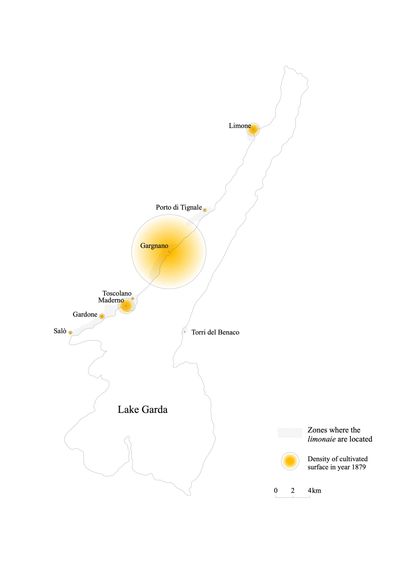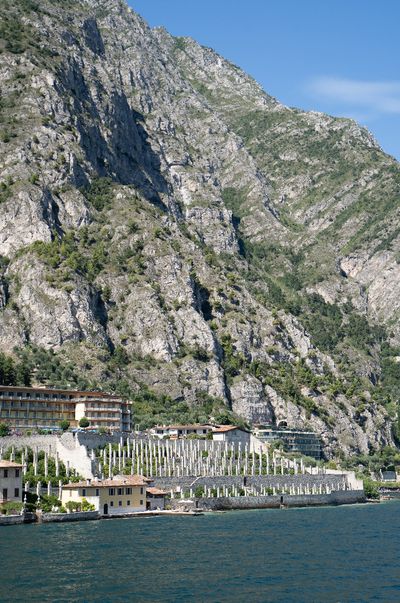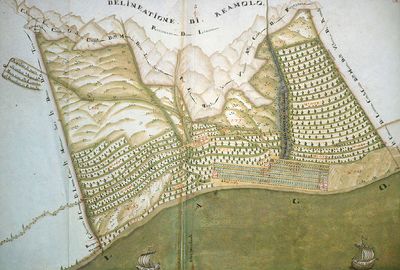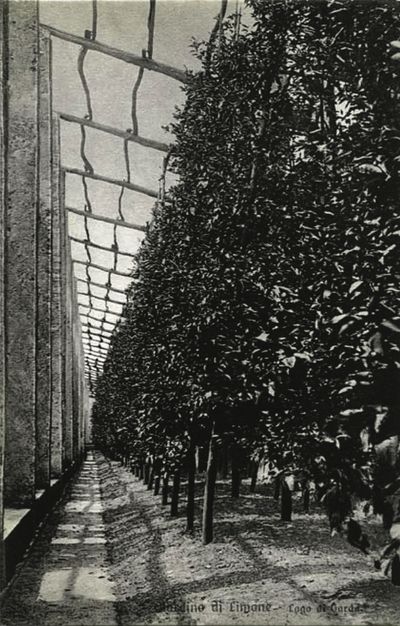A House for a Lemon Tree:
Designing with the Climate on the West Shore of Lake Garda
Sacha Rezzonico and Veronica Berardi
We live in a time when climate change is calling designers to act on anthropogenic emissions. The relationship between architecture and climate change has become conflicting and puts the natural balance of our planet at risk.(1) One of the main functions of architecture is to provide shelter from the natural elements, which always involves an interaction between the built and the natural environment.(2) Today, there is a need for architectures that dialogue with its environment in a (re)generative way.(3) Through the case study of Lake Garda’s lemon houses (limonaie), we want to study how architecture and climate can flourish together.(4) Garda’s lemon houses are structures designed to be adapted according to the seasonal climatic conditions. Taking full advantage of the existing topography and resources in the surrounding area, their symbiotic combination of architecture and territory has in fact created an otherwise unattainable singularity: the production of lemons, from the area situated between the city of Salò and Limone, became famous as the northernmost citrus cultivation in the world (46° north latitude).(5) Being in a time of climate crisis and looking at the limonaie through the lenses of climate-adaptive design, what can we learn from these structures today?
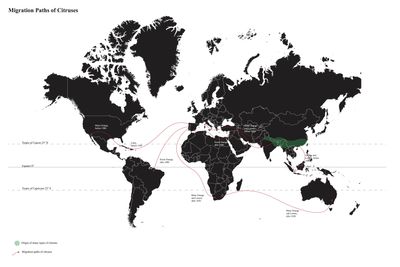
Migration path of citruses.
Although the geographic origin, timing, and dispersal of the genus Citrus remain unclear, a general agreement according to various taxonomy studies attributes their origins to the subtropical and tropical regions of Asia and the Malay Archipelago.(6,7) Lemons (Citrus x limon (L.) Osbeck), hybrids of unknown origin and genetics, were probably imported to Europe by the Muslim traders around the 11th century.(8) In the Garda region they spread thanks to the Franciscan monks of Gargnano, who imported them from the Ligurian Riviera around the 13th century.(9) These fruits find a favourable environment on the western shore of the lake due to its climatic peculiarities: the rocks that retain and release heat, the mountains that block the cold northern winds and the proximity to the lake. Originally grown in protected cloisters, the lemon tree spread timidly and discontinuously on the territory. Only starting from the 16th century, thanks to its ornamental use in the Renaissance gardens, the lemon tree began to be part of the landscape.
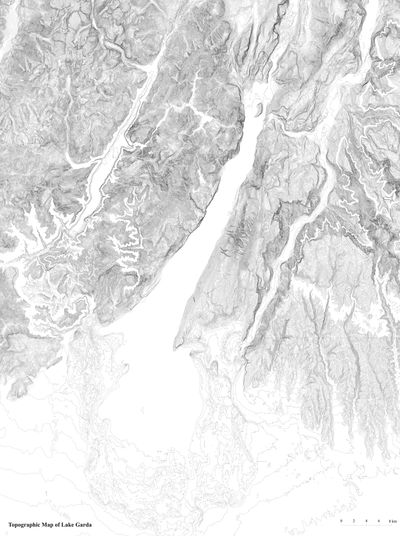
Topography around Lake Garda.
In the end of the 18th century, under the economical possibility of a growing sector in lemon production, the inventiveness of the aristocratic families introduced a new method of cultivation capa- ble to protect the plants from the harsh winter temperatures that periodically hit Lake Garda.(10) It was the birth of the limonaie. Set against the steep mountainside, arranged in rows and bordered by rising stone walls, the lemon trees are sheltered from dangerous winds. The cultivation terraces face East and Southeast in order to benefit from solar heat from the early morning hours. Proximity to water sources and a canalisation system allowed the plants to be irrigated by gravity. During the winter, in order to overcome the freezing temperature, the lemon trees were enclosed by movable panels made of wood and glass, becoming heated greenhouses. The intensification of lemon production, during the 18th century, fundamentally changed the economy in the region: fishermen, breeders and farmers became part of the far more lucrative business of lemon trade.(11) The wealth created by the lemon cultivation led to the displacement of entire families from the near regions to the lake strongly influencing the development of the region.
Sources
1 The construction industry is responsible for 39% of global energy related carbon emissions. See IEA, “Global Status Report for Buildings and Construction”, 2019.
2 The book Essay on Architecture provides a story of man in his primitive state to explain how the creation of the “primitive man’s” house is created instinctively based on his need to shelter himself from nature. See Marc-Antoine Laugier, Origins of
The Primitive Hut: Essai sur l’architecture, 1755.
3 The term “(re)generative” refers to the ability of a building being capable of healing the planet. Today a passive or net-zero building is not enough, designers must head to the concept of regenerative building that acts positively on the environment.
4 The term “flourish” refers to that described in the book by Ichioka Sara and Pawlyn Michael, Flourish, 2021.
5 Fava, I limoni a Limone sul Garda, 11.
6 Ramon-Laca, “The Introduction of Cultivated Citrus to Europe via Northern Africa and the Iberian Peninsula,” 503.
7 Wu et al., “Genomics of the origin and evolution of Citrus,” 312.
8 Fava, Tra le limonaie di Limone sul Garda, 3.
9 As evidence of the ancient introduction of lemon culture, the cloister of San Francesco in Gargnano presents capitals decorated with lemon, orange and citron’s leaves and fruits.
10 “Conte Carlo Bettoni-Cazzago (1725-1786), who resided in Bogliaco, had studied at the agricultural college in Padua, which enabled him to acquire the skills of a modern agronomist. Inspired by the new findings in agricultural technology, he founded an agricultural academy in Salò in 1768, which under his direction was to improve lemon cultivation through scientific research. Only three years later, the result was clear: an artificial climate had to be created for the lemon trees, which roughly corresponded to that of the regions of origin.” (Translated). See Tiggesbäumker, Der Agrumen-Anbau am Gardasee, 51.
11 Limonaia Prà dela Fam, guided visit, 2023.

